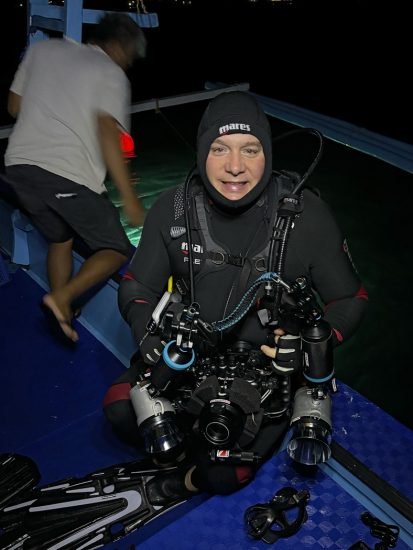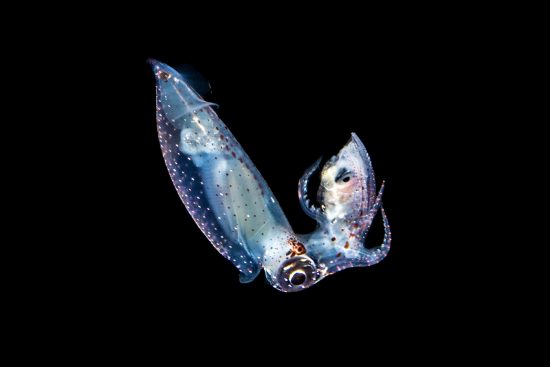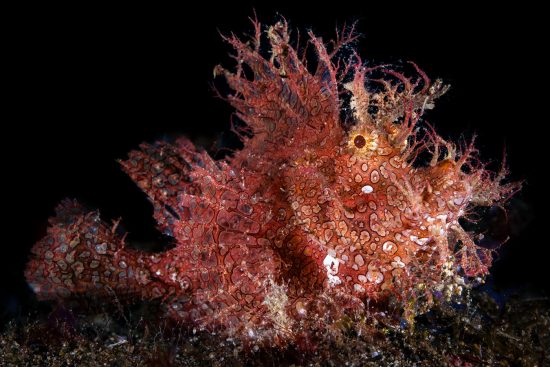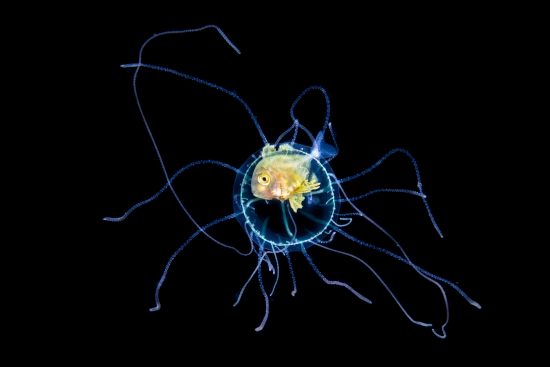












Anilao is a great muck diving destination, particularly famed for nudibranchs, frogfish, octopus and many more A-list critters. It is also very easy to reach for many Asian-based photographers, being just a 2-hour drive from Manila Airport, and the town is all about diving and underwater photography. With so many photographers visiting so regularly, it is here that trends start with gear and techniques, and shots are developed. As well as the excellent diving, I always enjoy coming here to keep up with the latest underwater photography fashion. The diving is done off small local boats with just a couple of divers on each, so you regularly end up mixed with divers from other resorts on the popular sites, allowing you to spot how they customise their camera equipment or just bump into friends.
My goal for this trip was a little different because it was focused on blackwater diving, which I wrote about earlier in the year. To recap, blackwater diving is where you go out into open water at night, hang a series of lights down into the ocean from a buoy, and then dive around it looking for weird creatures of the plankton. Anilao didn’t invent black water, but it is the place where, by far, the most people do it and the practice is highly developed. The plan for my trip was to get up late, limit myself to just a couple of day dives, and then a couple of hours after sunset to make two blackwater dives each day, finishing close to midnight.
We were rewarded with excellent critter encounters, including male and female argonauts (often called paper nautilus), many species of squid, many larval or pelagic seahorses, larval pipefish, elaborate larval stage reef fish and countless fascinating invertebrate species. It is thoroughly addictive, and not one of my group skipped any of the 14 blackwater dives we booked in our package with local experts Crystal Blue Resort.
You need the right gear for blackwater, and I will start with two essentials. First, a dive computer with a large and constantly backlit screen: the Genius is perfect, and second, a dive torch with a narrow beam to cut through the plankton filled water, letting you spot the most interesting subjects. I took the EOS 5LRZ and 15LRZ, both of which are ideal. There are lots of stingers in the water at night, so I wore my Amara XR Fingerless Tech Gloves, which leave your fingers free for operating the camera, but protect everything else. You might also want to take a boat coat to wear between and after the night dives.
I wore my 5/4/3 Flexa wetsuit and used my lightweight but high-performance Magellan BCD and my Dual Adj 62X regulator, which is also a very travel-friendly weight. As I so often do, I wore my Volo Race fins, which were a nice new pair (boringly I even went for the same colour as the old ones). I took the old pair for one last trip to Papua New Guinea last month and then donated them to the guys there at the end of the trip.
This was also my final trip of the year. I’ve clocked up 287 dives in 2023, taking me past 5300 logged dives in total (I made my 5000th dive last December), and I am heading back to Raja Ampat in January.
 Alex
Alex 26th December 2023
26th December 2023